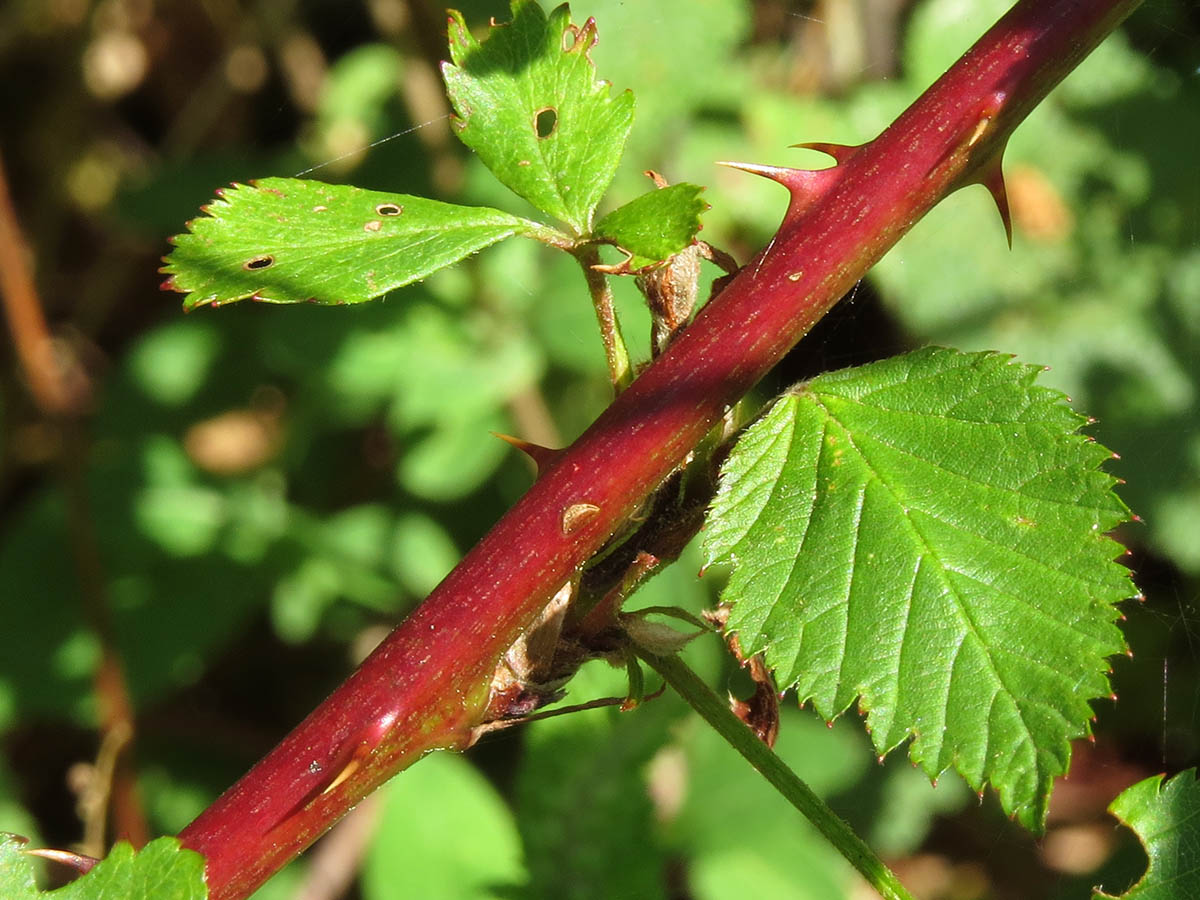
Rubus bertramii – Section Rubus
back to Alphabetical index · Taxonomic index
A white or very pale pink flowered bramble, similar to R. plicatus, but with longer stamens and more strongly curved prickles. It is widespread in England and Wales, occurring on acidic soils, especially damp heathland margins. It flowers in mid-May to June.
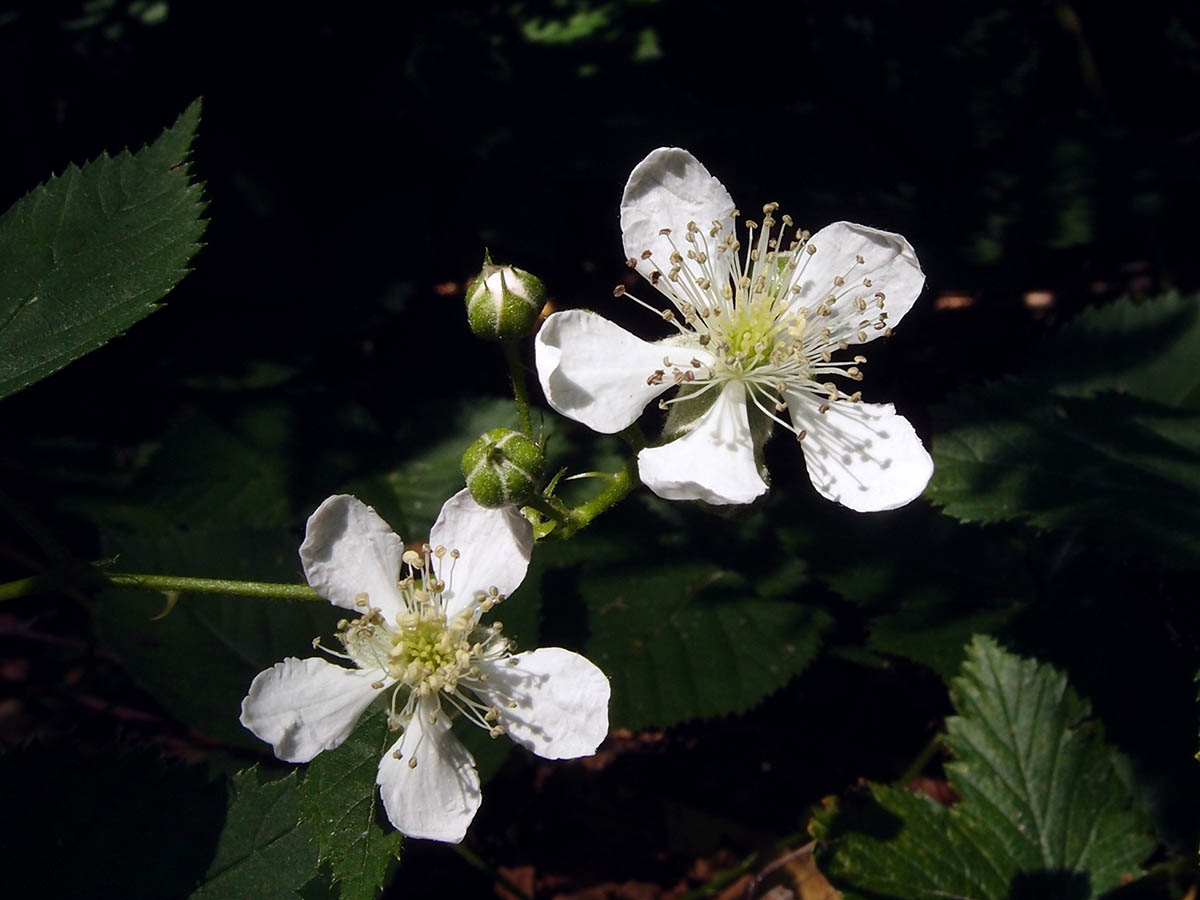
The panicle is many-flowered and much more intricately branched than R. plicatus when well developed, with flowers on long pedicels. Very short-stalked glands may be present on the pedicels. The prickles on the rachis are strongly curved to hooked in shape and often widely spaced.

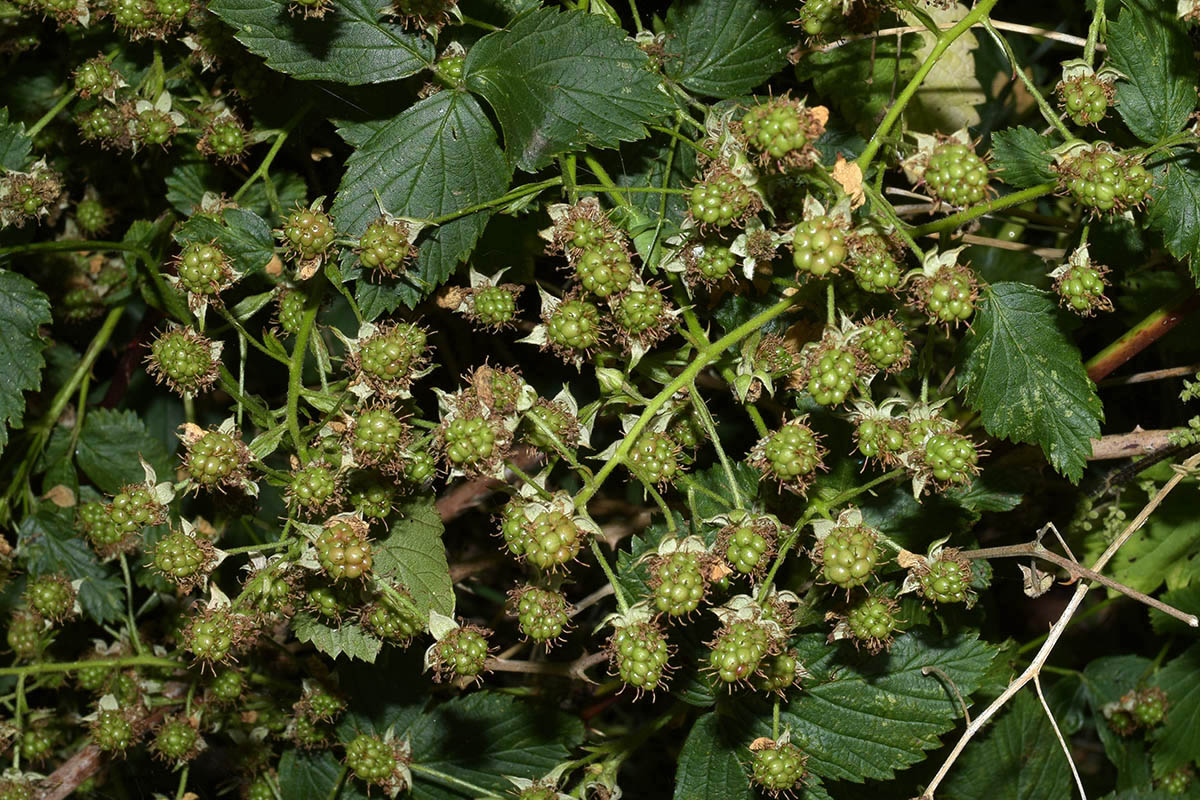

Flowers are about 2.5cm in diameter. Petals are white but sometimes pale pink in bud (probably more rarely so than R. plicatus); typically c.13 x 8mm. They are obovate in shape with a narrow, often sharply contracted, base. The stamens are much longer than the styles, even when splayed out.



Anthers sometimes have a few hairs, or more rarely are strongly hairy, as in the flowers below. This is a useful character to help distinguish from R. plicatus. The descriptions of the two species in Edees & Newton also state that R. plicatus has a hairy receptacle and R. bertramii has a glabrous receptacle (the stamens, styles and carpels are best removed to see the receptacle).

Sepals are green and shining with a narrow white border and a short or medium-long sharp tip. Note the pale pink flower in bud.

The leaves have 5 or occasionally 3 or 7 leaflets, which are thin, bright green or yellow-green, virtually glabrous above and sharply serrate. The terminal leaflet is narrowly to broadly elliptical (c.7 x 4.5-5.5 cm) with a rounded to slightly indented (emarginate) base and a medium to long acuminate tip. It is sometimes plicate like R. plicatus (the leaves of both species are very similar)
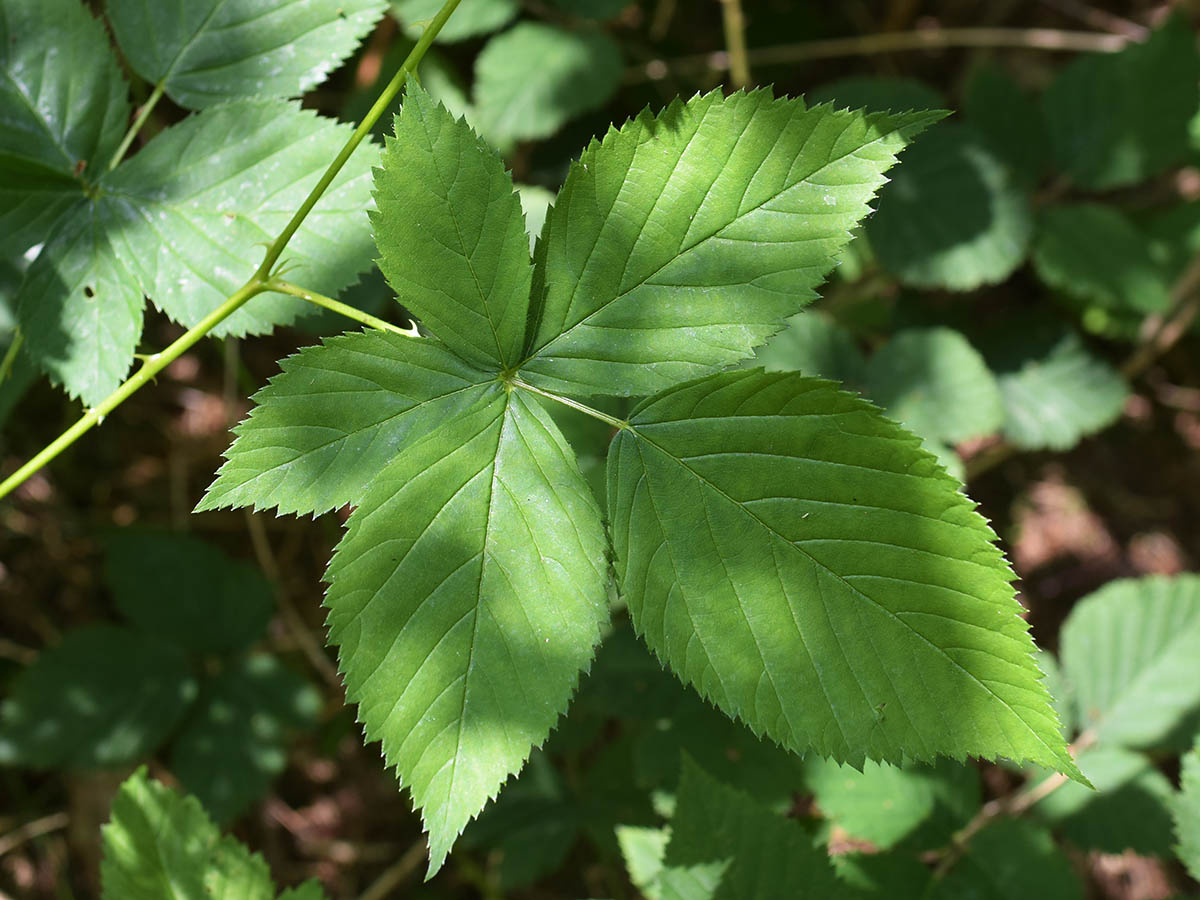




The photo below shows an aberrant leaf with more pronounced toothing – this is occasionally seen in many species and can cause confusion when trying to identify brambles. Bushes with normal leaves can be usually be found nearby.
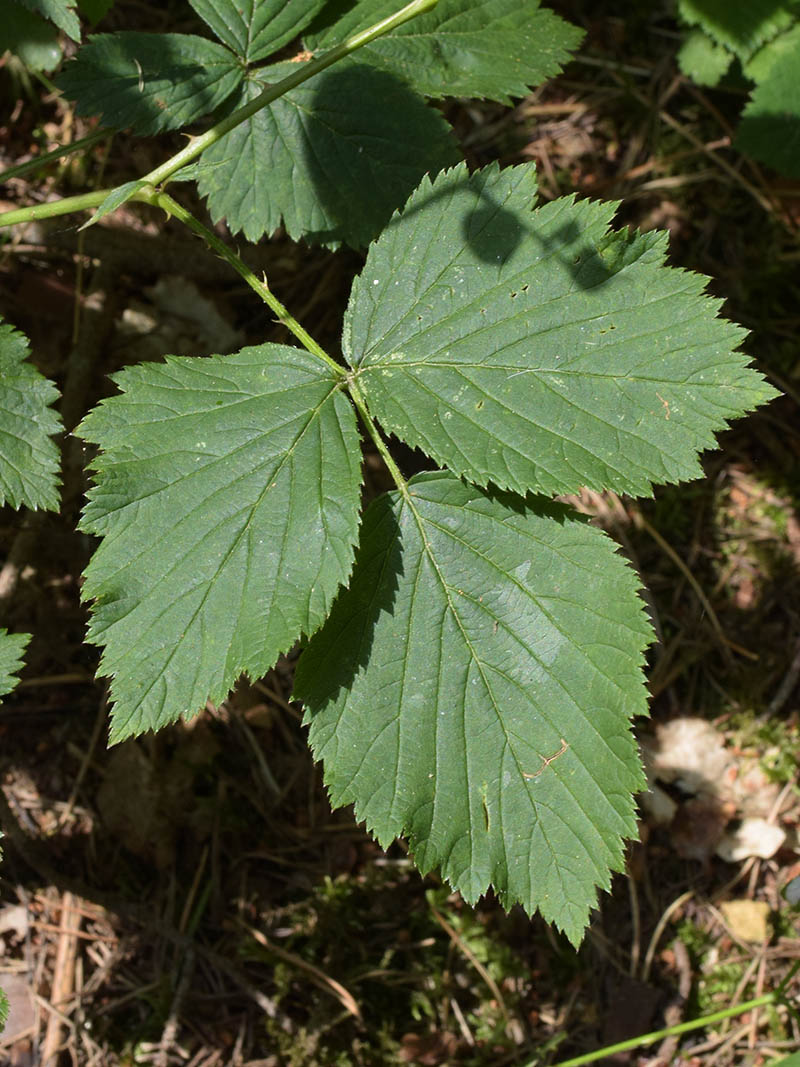
Leaflets are also virtually glabrous below (sparse hairs mainly on the veins).
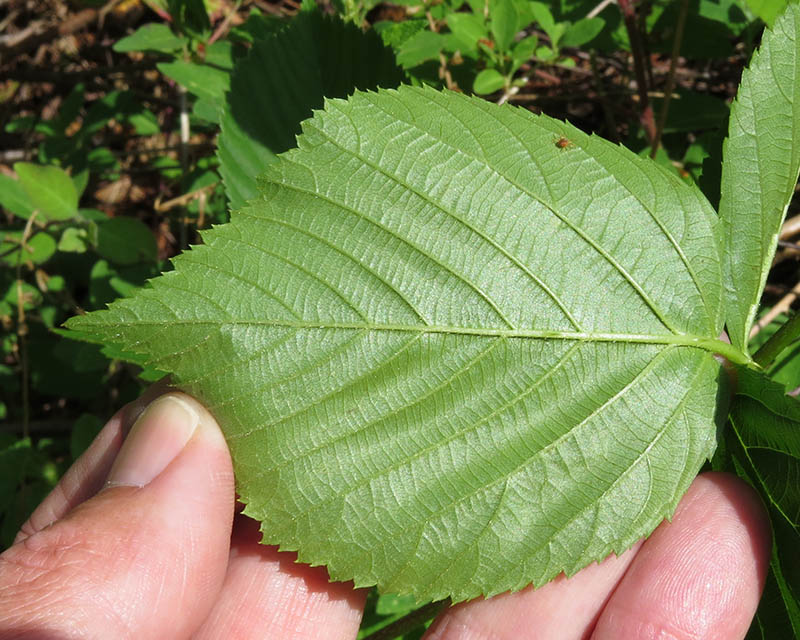
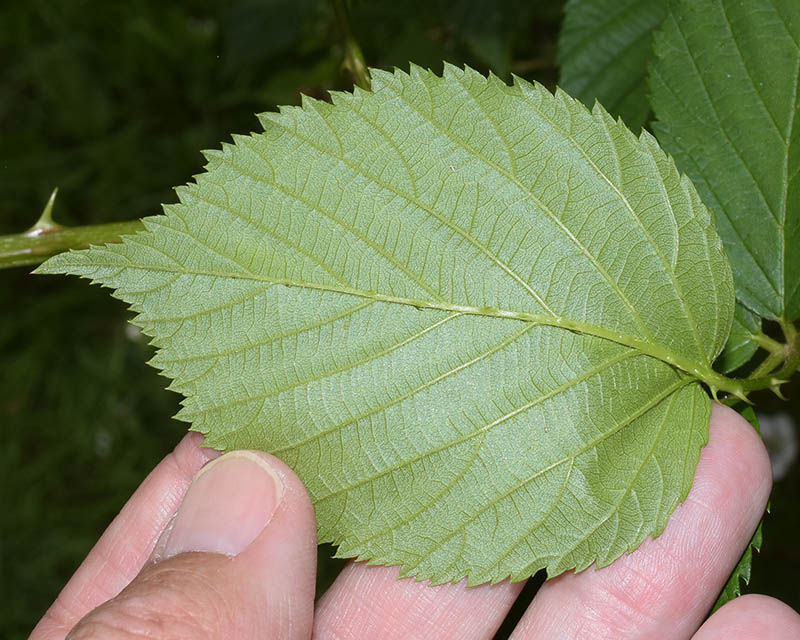
The stem is round to angled, bright green in colour, turning red in exposed conditions. It is almost glabrous, eglandular (sessile glands may be present) and often shining. Prickles have a broad, narrow base, and are equal to or longer than the stem diameter, declining to strongly curved; often widely spaced.


